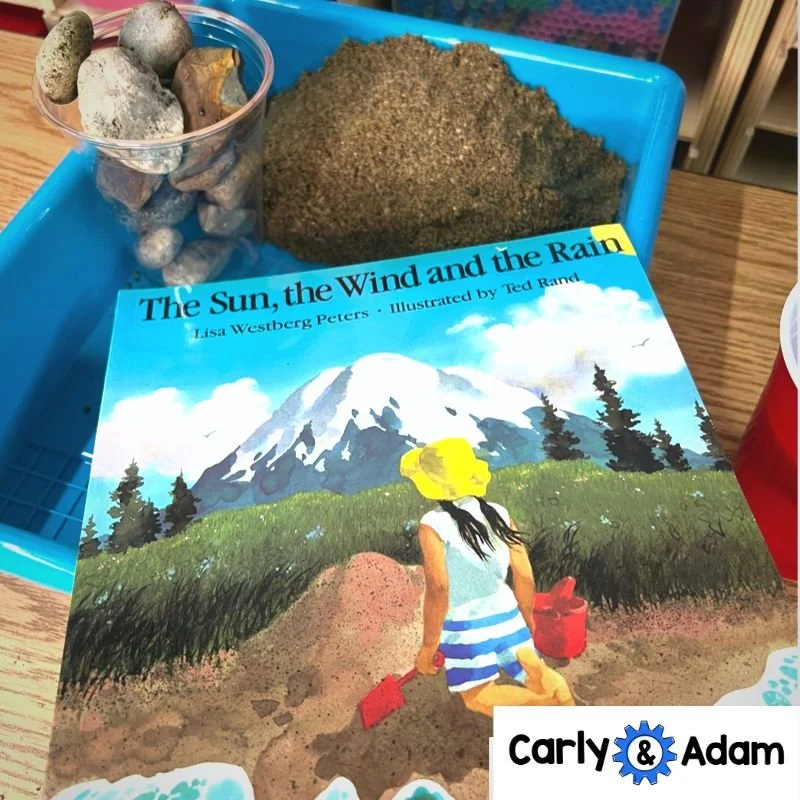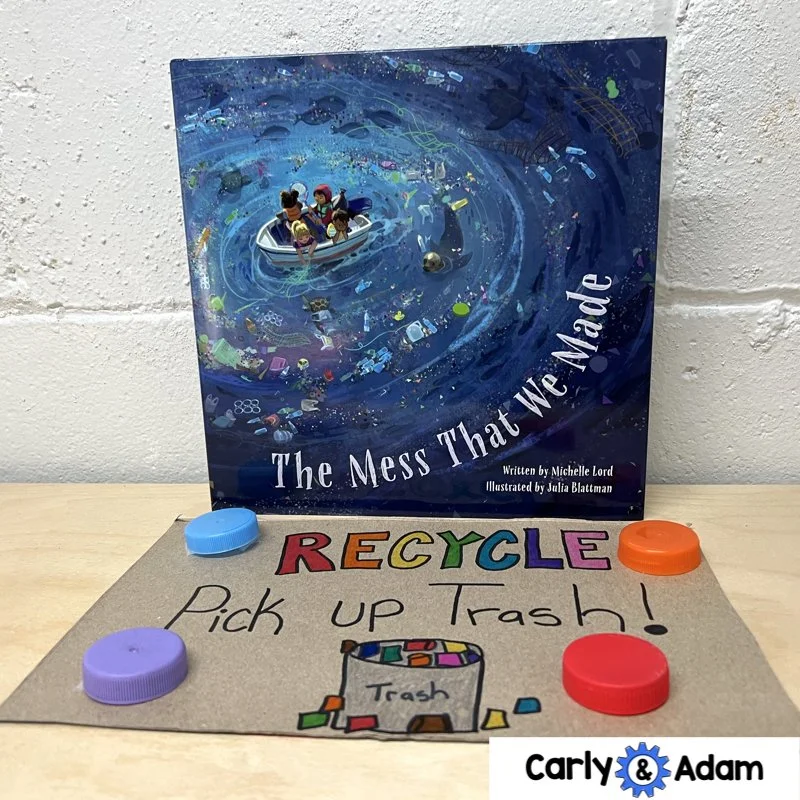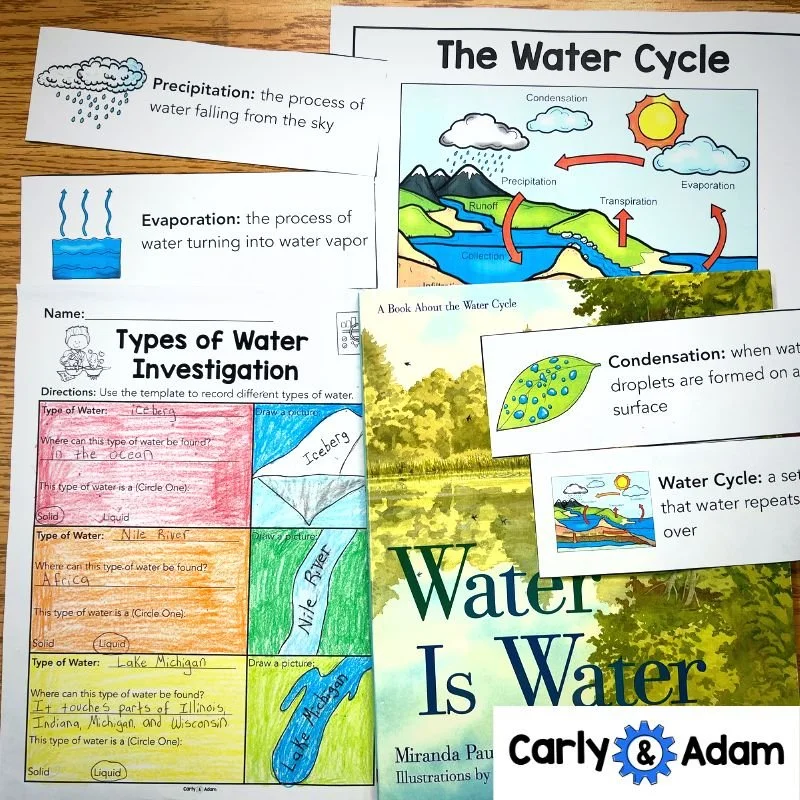Teaching 2nd Grade Earth Science
Introducing STEM to your 2nd Graders is a great way to spark their curiosity and encourage critical thinking. STEM (Science, Technology, Engineering, and Math) is a valuable tool for teaching problem-solving and promoting creativity in young students.
Check out these resources for getting started with STEM in second grade:
Erosion Science Activity - The Sun, The Wind, and The Rain
The Impact We Have on Our Environment STEM Activity
Water Cycle STEM Challenge
Don’t miss our SPECIAL BUNDLE!! Check out The Earth Science STEM Challenge (Erosion, Water Cycle, Landforms)
1. Erosion Science Activity - The Sun, The Wind, and The Rain
Engage your 2nd grade students with this Erosion STEM activity.
This STEM activity is designed to support teachers, homeschooling parents, and after school programs. With this resource, you can easily access high-quality materials and engage your students in learning about the important role erosion in our environment.
This NGSS-aligned resource includes a hands-on activity and engaging visuals to teach students about the erosion.
Students the ways that wind and water can cause weathering and erosion, changing the Earth’s surface. They compare solutions designed to slow or prevent wind or water from changing the shape of the land. They investigate solutions that have been designed throughout the world and will create some of their own.
It's a great companion to The Sun, The Wind, and The Rain by Lisa Peters
Material List:
The Sun, The Wind, and The Rain by Lisa Peters
tin pans or plastic tubs (approximately 16X20 and 4-5 inches deep)
soil or sand
large plastic cups
craft sticks and/or toothpicks
water
found materials in nature (rocks, twigs, etc.)
small shovels (optional)
plastic table clothes, newspaper and paper towels (for clean up)
2. The Impact We Have on Our Environment STEM Activity
Learn about our impact on the environment with this STEM Challenge that connects to the Read Aloud The Mess That We Made by Michelle Lord.
Scientists are helpful. They study the forests, deserts, and oceans to observe the environment and look for ways to help. In this STEM Challenge, students learn more about the impact we have on our environment. They work together to create posters to share ways that we can reduce our impact on land, water, air, and living things.
This STEM activity aligns with NGSS Earth Science Standards for Kindergarten. but can be used in 1st and 2nd grades too.
This is a perfect Earth Day Activity.
Material List:
The Mess That We Made by Michelle Lord
poster board (large construction paper or cardboard)
markers
recyclables
scissors/glue
3. Water Cycle STEM Challenge
Engage your 2nd Grade students with The Water Cycle STEM Activity!
This NGSS-aligned resource includes a hands-on activity and engaging visuals to teach students about the water cycle. Students identify where water can be found on the Earth and whether it is solid or liquid. They use different sources of information to find out about water.
It's a great companion to Water is Water by Miranda Paul
Material List:
Water is Water by Miranda Paul
Water bottles
Cups
Food coloring
Cotton balls
Aluminum foil
Tape
Scissors
Markers
This STEM activity is designed to support teachers, homeschooling parents, and after school programs. With this resource, you can easily access high-quality materials and engage your students in learning about the important role water plays in our environment.
SPECIAL BUNDLE!!
The Earth Science STEM Challenge (Erosion, Water Cycle, Landforms)
Covers all Second Grade NGSS Earth Science Standards!
In this Second Grade STEM Challenges BUNDLE, students learn about weathering, erosion, the water cycle, landforms, bodies of water, and quick and slow events that change the earth.
Students conduct investigations, and use engineering, and science to do the following:
Gather information and provide evidence about how events on Earth can occur quickly or slowly.
Analyze and compare different solutions to prevent wind or water from changing the shape of the land.
Create models to represent the shapes and kinds of land and water in an area.
Find information to learn about where water is found on Earth.
Material List:
sticky notes
books on weathering, landforms, and erosion
crayons, markers, or colored pencils
poster board or chart paper
magazines with examples of weathering, landforms, and erosion or photo examples for students to include on their posters
scissors and glue sticks
tin pans or plastic tubs (approximately 16X20 and 4-5 inches deep)
soil or sand
large plastic cups
craft sticks and/or toothpicks
water
found materials in nature (rocks, twigs, etc.)
Food coloring
Cotton balls
Aluminum foil
sticky notes
play dough
dry erase markers
cardboard
Each activity is designed specifically with Second Graders in mind. Each 2nd Grade STEM Challenge is connected to literacy with a fun and engaging read aloud book.
Students will:
Learn the ways that wind and water can cause weathering and erosion, changing the Earth’s surface. They use information from different sources to find evidence that Earth events can occur quickly or slowly, and work together to create posters to share evidence of the Earth’s changes. There is also a game included where students look at real world events and decide if it's a fast or slow change. Once they have decided, they run to a specific place in the classroom.
Explore the ways that wind and water can cause weathering and erosion, changing the Earth’s surface. They compare solutions designed to slow or prevent wind or water from changing the shape of the land. They investigate solutions that have been designed throughout the world and will create some of their own.
Identify where water can be found on the Earth and whether it is solid or liquid. They use different sources of information to find out about water.
Use play dough and the cards we created to make different bodies of water and landforms, and create a 3-D model of a landform or body of water.
Have more questions or need additional resources?
You can get all 250+ STEM Challenges by Carly and Adam as part of the STEM Teachers Club Membership. Save $5 on your first month using coupon Code: CarlyAndAdamBlog.
We hope you have found this blog post helpful. To stay connected with Carly and Adam's teaching tips and classroom freebies be sure to follow us on Facebook, Pinterest, Teachers Pay Teachers, and subscribe to our blog!





